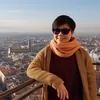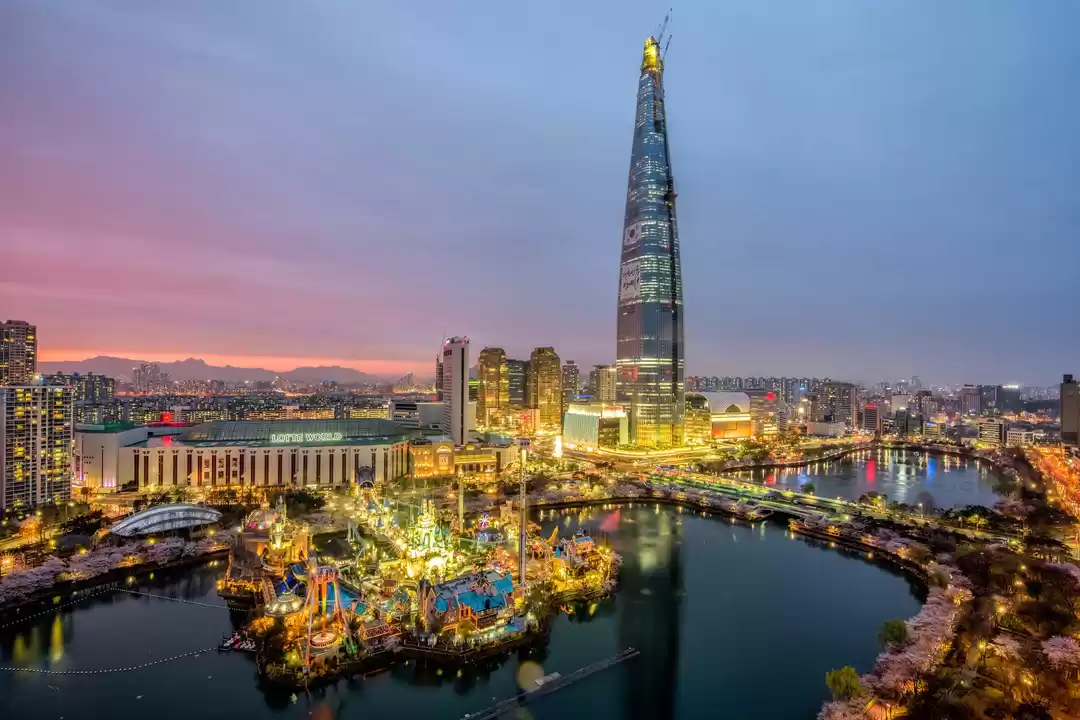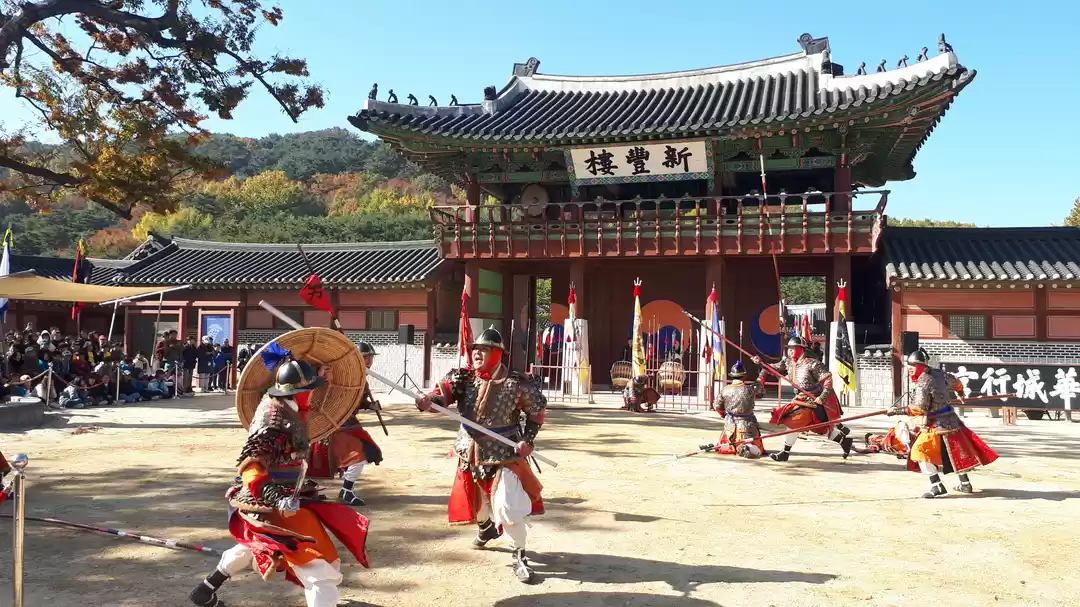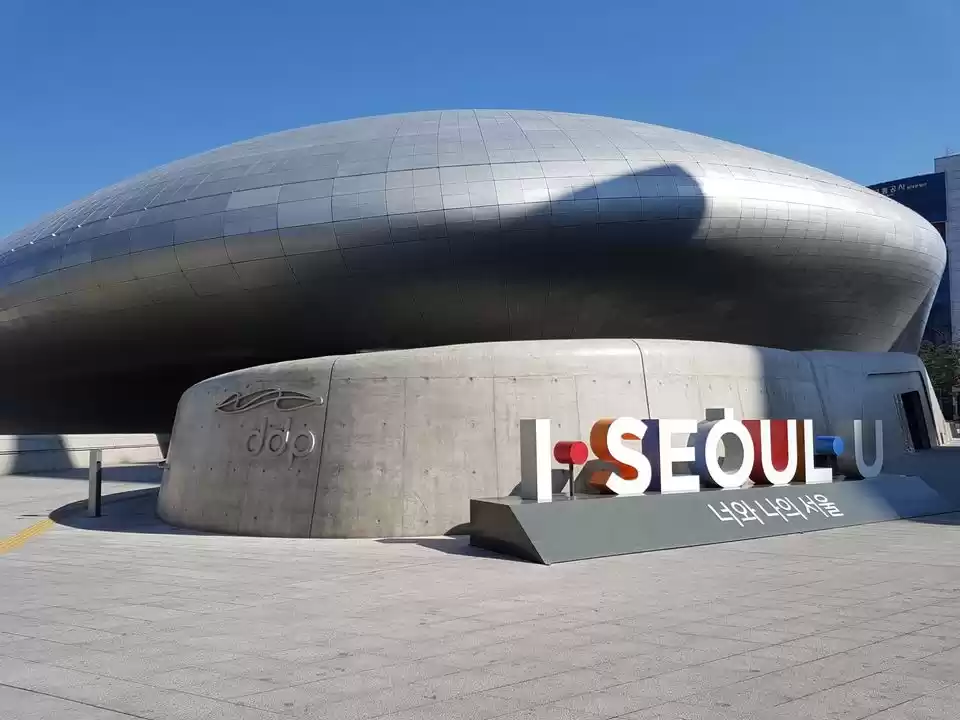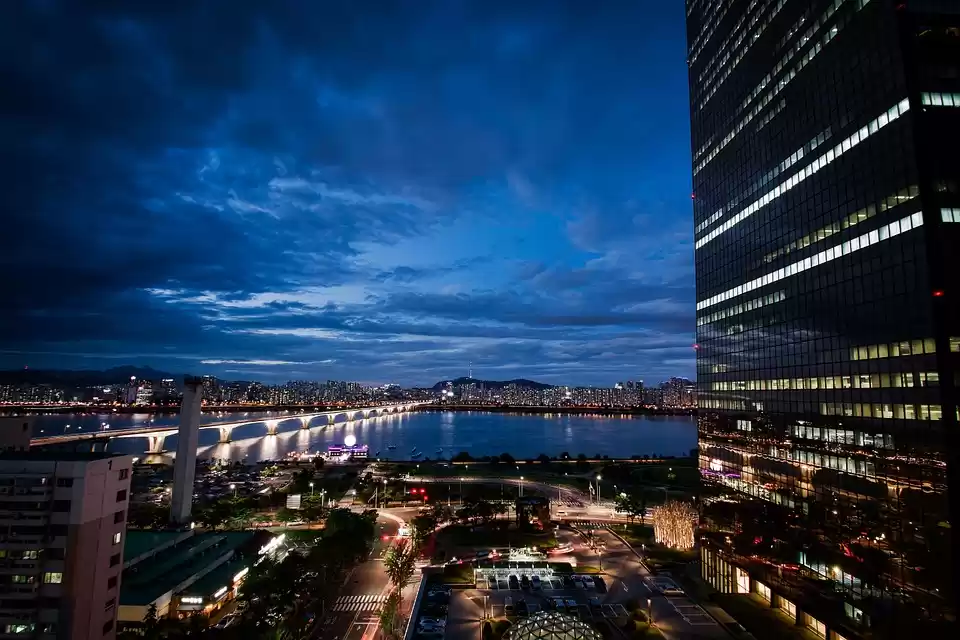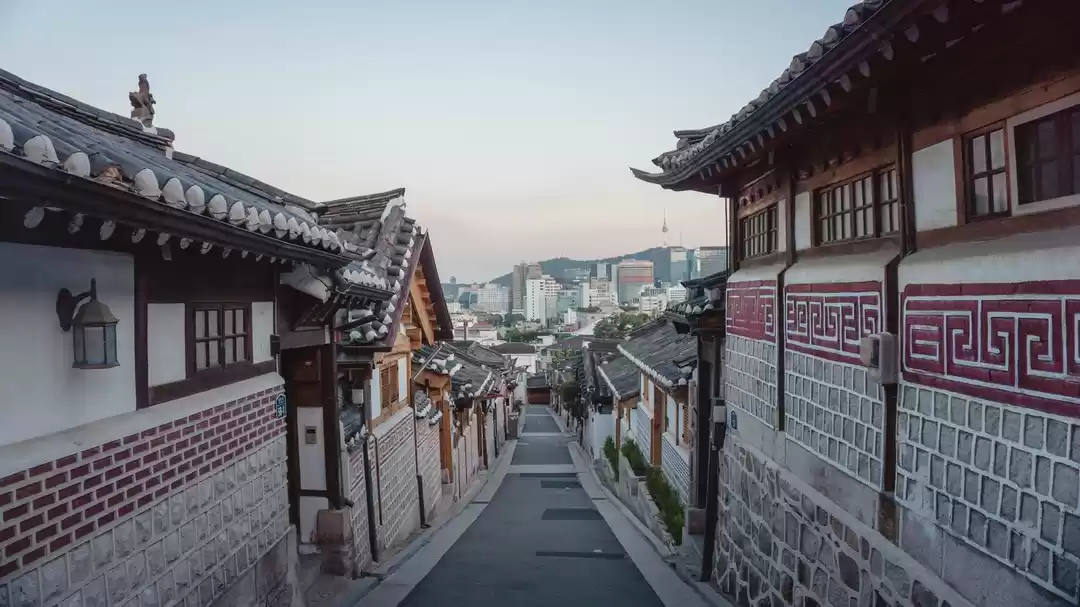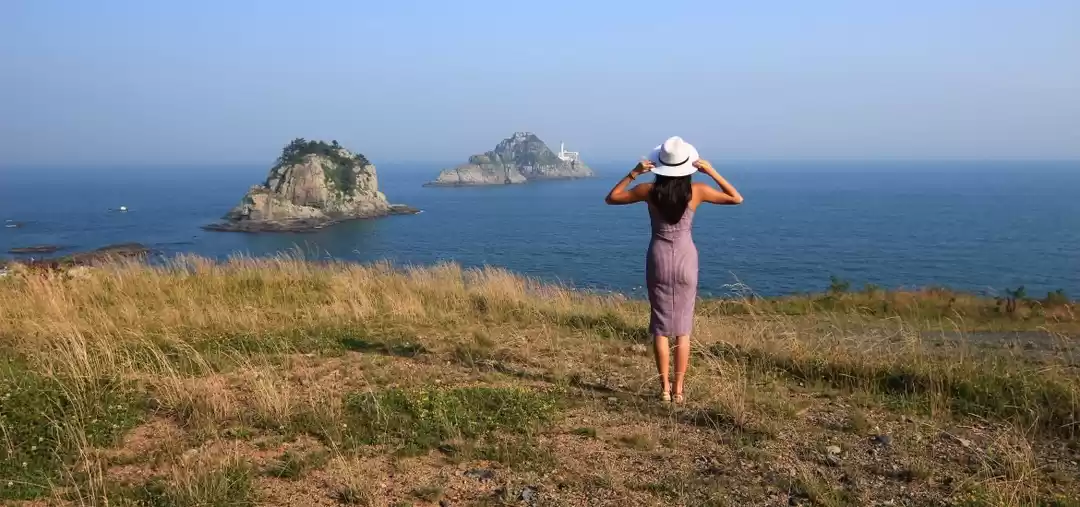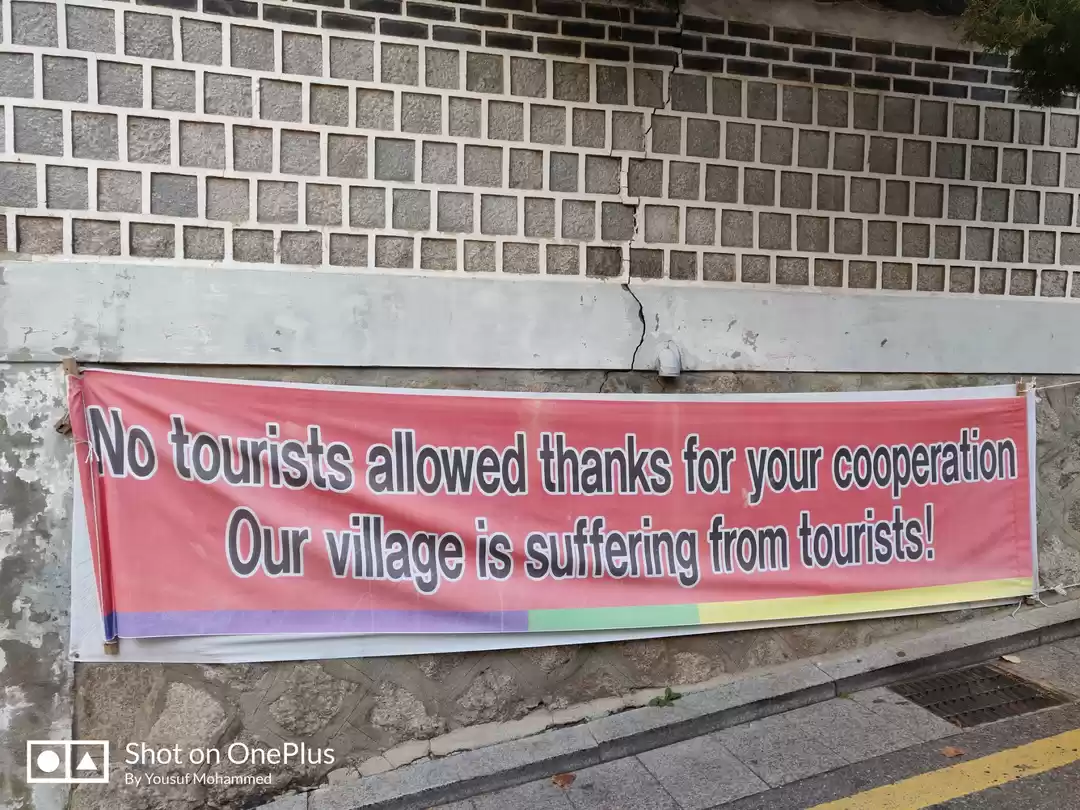Day 1: Myeongdong and Hongdae
What we like most about Seoul is that each neighbourhood has its own unique, fascinating style that can't be found in any of the other neighbourhoods. The only thing all the neighbourhoods have in common are the beauty product shops. They are as common as convenience stores - there's one at every corner.
Seoul is very cold in winter, but this trip wasn't as cold as we expected. Most days, the temperature was between zero and 5°C, and we only had a couple of days that were between - 10°C and zero.
We visited the neighbourhoods of Myeongdong and Hongdae today. Myeongdong is very touristy, but we liked it! Not because it was touristy of course. The street food selection was pretty enticing and we just liked hanging around the main shopping strip people watching. There were beauty product shops every 3 metres, and the salespeople were yelling out promotions in Mandarin. We didn't do much shopping because we live in a tropical country and they were selling clothes meant to be worn in winter. But there were lots of tiny lanes branching out from the main strip which we would have liked to explore if we had time! Myeongdong also has tons of good restaurants. Plenty to see!
Hongdae is THE place to be, I tell you. It's hip, happening, and so full of youthful energy. At midnight the streets were still filled with people like it was 7pm, and lots of buskers were around, hoping to get noticed maybe. We ate at the BEST KIMCHI JIGAE place ever. Boiling hot, spicy, full-of-flavour kimchi jigae + soju and makgolli (rice liquor) = my kind of Happy Meal, no need for the toy. My Korean friend brought us here and my husband and I both agree it was the best meal ever on our entire trip. The restaurant is called Nang-Poong(낭풍) and is near to Hapjeong train station, exit 3. Pictures and what the restaurant looks like here (Korean only). There's also a well known weekend market near Hongik University, but it isn't open in December so we didn't get to check that out.
Many people like to compare Korea and Japan, but I think you can't. They are so different and have their own characteristics that makes them such wonderful places to explore. Korea felt a bit more like Taiwan, if one must make a comparison. Something about the style of the night markets and shopping streets made me feel that way.
In Myeongdong, we'd like to recommend this yummy porridge restaurant. We found it hard to find breakfast before 10am in Seoul, but this place was open early. It's called MiGaBon (味加本). Warm and tasty porridge..yum! Directions to the restaurant and more about it here, including food pics.
Some tips:
1. Getting a SIM card the moment you land in Korea is hard, as the SIM card will only arrive a few days after you apply for it. You can apply for a SIM card before you arrive or just rent a WiFi egg device at the airport. We bought pre-paid data cards from our home county.
2. I'm not sure if it was just our phones, but Google Maps worked TERRIBLY in Korea. We could not get proper directions. It could track our location pretty ok, and 98% of the time it showed the location of an address we typed in accurately. But when we just wanted walking directions from the train station to a particular location 500m away, Google Maps directed us to take a bus and go one biiiiiig round.
3. It's good to keep addresses and names of important places you want to get to in Korean so that you can ask for directions. Especially useful if you're taking a taxi.
4. We don't speak or read Korean, but we didn't have major difficulties getting around. The important signs in the subway and on the streets are in English, and quite a lot of restaurants have picture menus or pictures in the shop you can point to. If all else fails, you can point at a dish someone else is eating. Hahaha :) but knowing simple words is nice. One useful word I learned from my Korean friend is how to say "excuse me" when you're trying to pass through and someone's blocking your way: shil-yae-ha-mi-da. Super useful on the trains when it's crowded.
Day 2: Seoul City Wall
We climbed the Seoul City Wall today! This is one of my favourite things to do in Korea. I'm surprised I didn't hear much about it before doing research for this trip. See, South Korea is not just good for shopping! I had so much fun climbing the wall. The Seoul City Wall was built around the ancient capital in 1396 by the founder of the Joseon Dynasty, King Taejo. The wall is built along the ridges of four mountains (Bugaksan, Naksan, Namsan, and Ingwangsan), linking them together in a big circle, and there's a walking trail on it. From the Seoul City Wall, you can find the hiking trails to climb up these mountains. There are also many historical places of importance along the way that you can visit. So much to do!

Walking the entire length of the wall would take about 14 hours, so we chose to walk from Changuimun Gate to Hyehwamun Gate. This route took us about 3 hours. You can enter and exit at any point of the wall that you wish. Check out this website to see what's around the different sections of the wall!
From the wall we could see gorgeous views of Seoul. Too bad it was a bit polluted and foggy, but the views were still nice! The part of the wall just after Changuimun gate is very steep, so we had to climb up many steps. We ended up unzipping our coats because we started sweating!! But there are many resting points along the way, so no need to rush. The older Koreans are so fit. They were chatting and climbing up the stairs while my husband and I were huffing and puffing our way up. So embarrassing.
There is a military base between Changuimun Gate and a part of the wall called Malbawi Information Centre (which we were passing on the way to Hyhwamun Gate). This section is gated and you need to get visitor passes as well as show your ID/passport (for foreign visitors). It is only open from 10am to 5pm in winter, and you must enter at the latest by 3pm. You can enter the other parts of the wall freely. Also, if you want less of a physical challenge climbing the wall, start walking in the opposite direction from what we did - from Malbawi Information Centre to Changuimun Gate.
It was so fun walking along this wall and imagining what life was like in ancient times when the wall guarded the city. Wear comfortable shoes for this walk! The wall is lit up at night and is so pretty!!
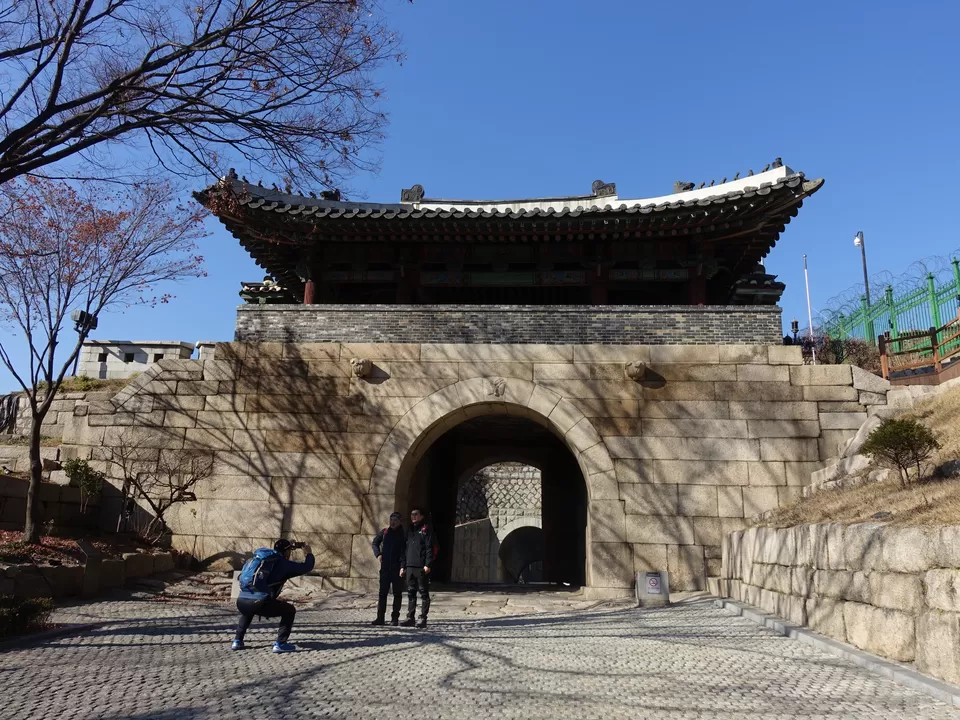

We also topped the day off by devouring a bowl of samgyetang, also known as Ginseng Chicken Soup. I do not like to eat ginseng, but this chicken soup was so delicious. It's a whole spring chicken that's stuffed with glutinous rice, water chestnuts, dates, ginseng, (and other things I probably didn't notice since I was stuffing my face with it), and topped with pine nuts and green onion. The chicken was so tender and the broth so tasty. I'm sorry I take terrible food photos, but it's so delicious! Best homey comfort food. After a tiring day of wall climbing, this was such a treat. The name of the restaurant we went to is: Tosokchon Samgyetang (토속촌 삼계탕). Go during odd mealtimes, e.g. 11am, 3pm, 5pm. Otherwise you'll have to wait in line outdoors (not ideal in winter!).

Day 3: Gangchon Rail Park, and some shopping
Some of the palaces are closed on Mondays, so we did a bit of a day trip outside Seoul today. Gangchon Rail Park is about 2hours outside Seoul by the Seoul Metro. Looooong metro ride but really worth it, in my opinion!
You cycle on a cart on an old train track between 2 unused railway stations, and admire the gorgeous scenery along the way. The rail park is one of a few in the country but is famous because the uber popular reality South Korean TV show Running Man filmed there. The distance between the two stations is quite long, so to make things easier, the 2nd half of the journey is by a slow train. The carts are two-seaters or four-seaters.
It wasn't that strenuous a ride as parts of the railway track was slightly inclined downhill, and the rest of the track was pretty flat. We passed through some tunnels which were decorated and had music playing as you cycle through them. Super fun experience!!
The rail park is called Gangchon Rail Park, but to get here, you get off at Gimyujeon Station, not Gangchon Station. The park is right outside the train station.


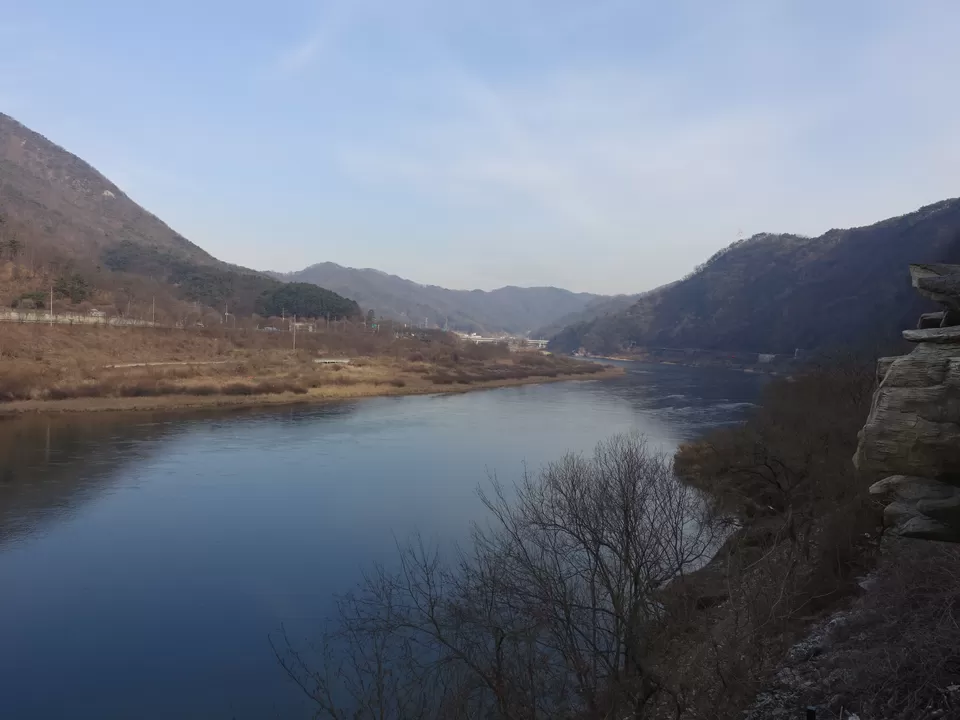
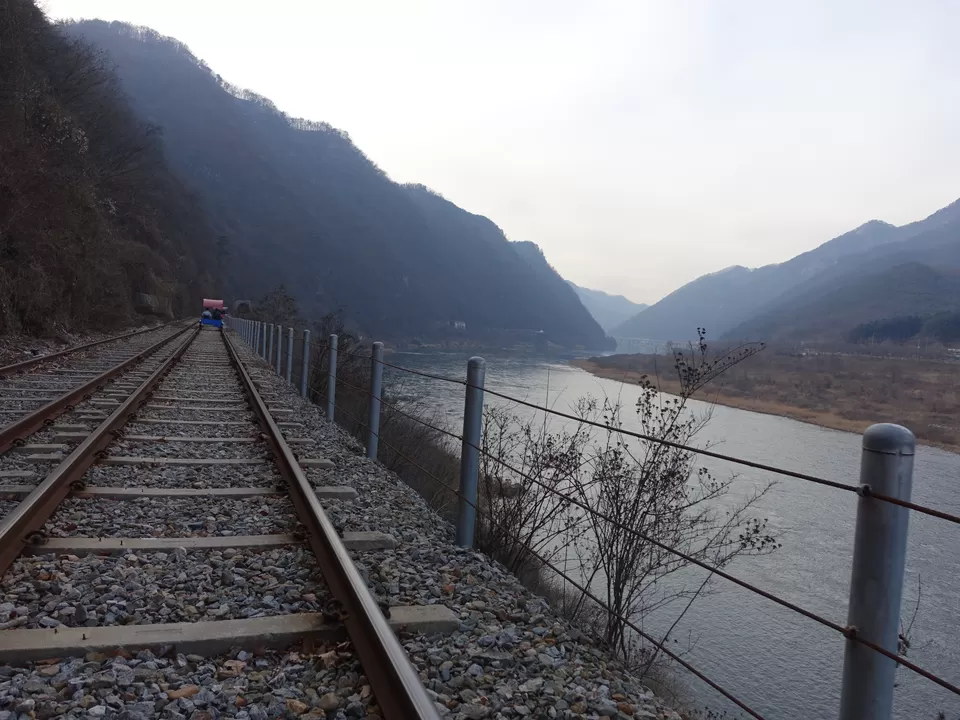
We later had a meal at Palsaik Samgyeopsal. It's korean BBQ and the pork is marinated in 8 different flavours. So yummy!
For chic, classy, and fashionable clothing designs, visit Garosu-gil. Lots of elegant, good looking people here. The clothes and accessories sold here are not cheap, but the designs are so pretty. I managed to find something that was not too expensive and also suitable for a tropical climate. There are many nice cafes and restaurants here too - don't forget explore the small back lanes!
However, for more affordable stuff, I loved visiting the Ewha Women's University area! Small lanes of little shops selling clothes of different designs. I was limited by the fact that I couldn't purchase all those cute jumpers and sweaters. In spring and summer, I can imagine there'd be lots more stuff suitable for tropical climates too.
Day 4: The Secret Garden & Insadong
Changdeokgung Palace was the 2nd most important palace in Joseon times, and according to the palace brochure, loved more than any of the other palaces because of its huge garden in the palace grounds. Well, after visiting, I can see why. This garden, known as the Secret Garden (or, Huwon) takes up 2/3 of the entire palace, and was used by the royal family for relaxation, hunting, other outdoor activities and creative pursuits like poetry writing. I would totally chill in this palace. The garden is spacious, beautiful, and peaceful. The trees kind of shade you from what's outside. The secret garden is named as such not because it's a secret, but it refers more to it being "private", since only the royal family and their personal servants were allowed inside. The pictures below are all parts of the secret garden.
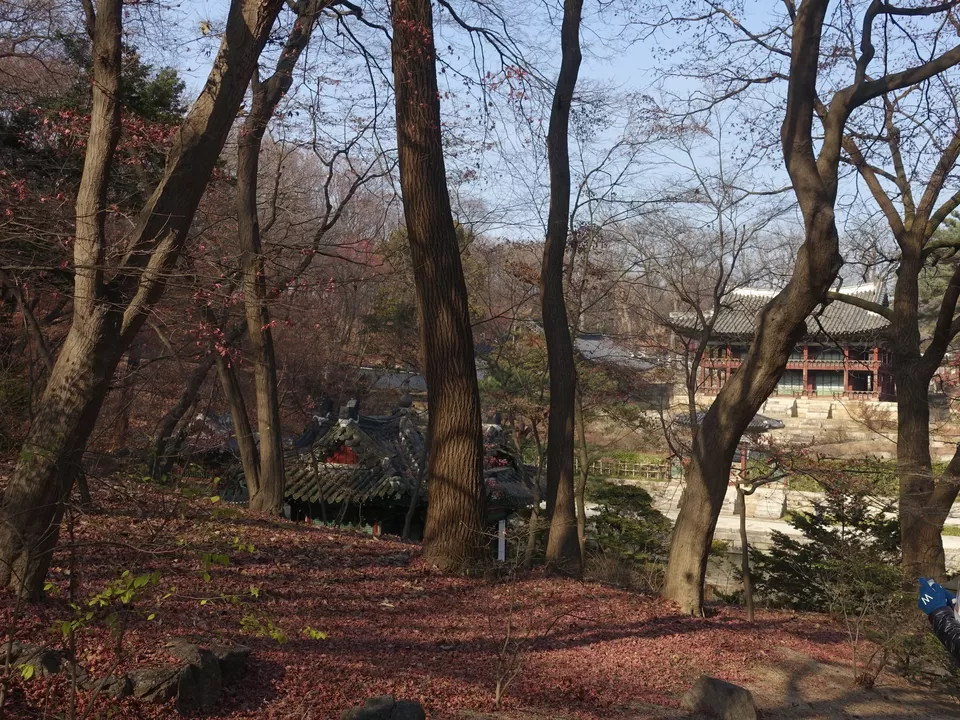
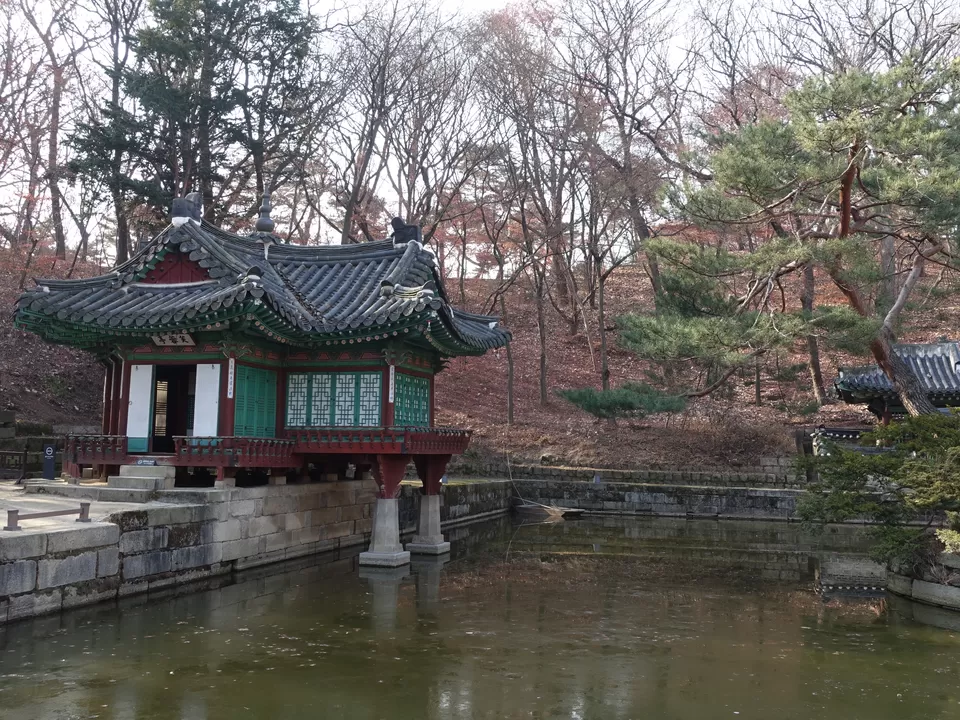

To enter the secret garden, you must take a tour. No one is allowed inside unescorted - it's their way of preserving the gardens and I highly support it. There's an additional ticket price too for entry into the garden. You can reserve tours online. Each tour is about an hour or so, as there's so much to see in the gardens, and you need time to slowly stroll and enjoy every part of it.



The rest of the palace grounds are wide and spacious. Tours are available for the rest of the palace too, but we chose to explore it on our own.
Next stop is the artsy craftsy neighbourhood of Insadong. Remember how I said each neighbourhood in Seoul is different? Here's the cultural, artsy part of Seoul! We skipped some of the souvenir shops and went to Ssamzegil Shopping Complex. Unique crafts by local designers are sold here, and the building itself is decorated with artwork. The building is also special as the shops line a walkway that goes around the entire structure with a square in the middle. You can explore the entire building without walking up stairs or using escalators. You just walk up this slope continuously.
There are many cafes and restaurants in Insadong - don't forget to check out the ones hidden in the back alleys! We found a delicious mandu (dumpling) shop and a restaurant selling all kinds of Korean food! One of our favourite cafes in Insadong is called O'sulloc, which has many branches within Seoul. O'sulloc sells delicious cakes and teas, and their most famous are the cake rolls. So good, I tell you. My husband and I like the black tea cake roll with green tea cream filling best! I wish I could spend an entire afternoon just trying all the different teas they sell! They all smell lovely and the ones I had tasted divine. The cafe is also a glorious place to relax in, read a book, and people watch. Best kind of afternoon!
Day 5: DMZ - Still technically at War
We took a tour to the De-Militarized Zone today. I was so surprised at how near Seoul it was. It reminded us that South Korea is still at war, and I understand now how any small incident can be cause for concern.
To visit the DMZ (the 4 km wide zone surrounding the border between North and South Korea that is 2km wide on each side), you must go with a tour. You can sign up with any tour agency. Only certain people are qualified to be tour guides at the DMZ, so the tour agency will just forward you to a specialised guide. There are many things to see in this area, and one of the most popular sites is the Joint Security Area (JSA) at Panmunjeom, which is the one in photos you might have seen of blue sheds with North Korean and South Korean soldiers inches away from each other. We realllly wanted to visit the JSA but unfortunately, throughout the entire time we were going to be in Korea, the JSA was closed for military training. No matter, the other sights within the DMZ were very interesting as well.
On our tour, we visited Imjingak Park, Freedom Bridge, the Third Infiltration Tunnel, Dora Observatory, and Dorasan Station. The Third Infiltration Tunnel was very interesting because we got to go down into one of the tunnels that the North Koreans built as they were trying to invade South Korea. 30,000 soldiers could pass through in an hour - that is very scary. This tunnel is only big enough for 2 people to pass through side by side. The museum above the tunnel showed the entire history of the tunnel and how each of the 4 tunnels that were build by the North Koreans were discovered.
Being at Dorasan Station was a very moving experience. Many people, including our tour guide, donated money to build the station. Dorasan Station is the northernmost station in South Korea, and has tracks that go to North Korea. There was a special economic zone built some years ago in the North and workers from South Korea used to commute daily to North Korea via this station. Some tensions arose and they stopped this.


Day 6: Everland Theme Park
Everland was an extremely peaceful theme park, probably because it was winter, and we went on a week day. It wasn't crowded and we didn't have to wait too long for the rides! It had a good mix of thrilling rides for teenagers and adults, and rides suitable for children. The T-Express is one of their major rides and I was very nervous before the ride as it started with a big drop, but still glad I did it. My favourite ride was the Rolling Xpress, which involves two 360 degree loops. The ride was fast in both speed and duration. My husband thought it was over too soon. Everland has it's own mini safari and you tour on an amphibious vehicle. It was cool seeing all the animals up close, including the adorable giraffes.

Everland is very far outside of Seoul, it takes around 2 hours to get to. Thus, I highly recommend getting a shuttle bus - the park provides a shuttle bus ride for a fee from Seoul.
Day 7: Onward to Jeonju! The city that brought you Bibimbap
Located 1.5hours by KTX from Seoul, Jeonju is also known as a foodie city. In just Jeonju Hanok Village (Jeonju Hanok Maeul) alone, we were able to sample so much unique, and delicious food. Jeonju Hanok Village is made up of more than 800 traditional Korean houses (hanok), which makes it the largest hanok village in Korea. The hanoks have been converted to homestays, restaurants, shops, and museums. We stayed in one, and it was a wonderful experience. All the floors are heated, which makes it a blessing in the winter. Sleeping on the floor was comfortable and not difficult to get used to.

We loved wandering around the Hanok Village. It is like a grid of many many hanoks, with small little lanes leading to even more hanoks. There's so much so see in the village. You can explore the lanes, try all the street food, or visit some of the museums. The street food is amazing. At every corner there's something different to try. Curry chicken baguette, delicious dumplings, grilled octopus on a stick, all kinds of fried goodies, ice cream, jellies...

If you wish, you can rent a hanbok for a day and waltz around the village. Because of all the traditional architecture, it would make a pretty picture! I was too lazy to take out all my layers of clothing so I didn't go for it.

We visited the gift shop at the Jeonju Traditional Hanji Paper Centre, where I went crazy buying all the notebooks and pretty traditional handmade paper. The sign to the paper centre was in Korean so we got lost at first. But we found an adorable little shop selling art and craft called Miyoun. The artist works in the shop too, and seeing her create her stuff was so cool. She draws, paints, and writes calligraphy on cloth, pouches, postcards, notebooks, bags, t-shirts...Do visit her shop!
We had extremely good bibimbap at a restaurant called Jeonju Hyundaiok, which was next to our homestay. Jeonju bibimbap is different from bibimbap in other parts of Korea, because in Jeonju, they put a raw egg yolk on top of the rice and goodies. Bibimbap in Jeonju is typically eaten with beef - we didn't see any made with other meats or a vegetarian version. There's also a variation with raw beef, so if you don't like that, look out carefully for the picture of the version that has cooked beef. I don't eat beef at all, so I just gave my beef to my husband.
I think one of the things that makes the bibimbap so good is the combination of the raw egg yolk and some sesame oil or something they use that makes the entire bowl so delicious. A must try! Jeonju Hyundaiok sells other typical Jeonju dishes such as beansprout soup, which is so warm and comforting.

Other food recommendations:
1. This mandu shop along Taejo-ro (the main street), opposite Gyeonggijeon Hall. I cannot remember the name of the shop but its the only fried and steamed dumpling shop we saw and there were tons of people in it. You'll know it when you see it.
2. Sobok: Recommended to me by a friend. It sells tea, coffee, ice cream, dessert. Adorable cafe! They put a daisy on their ice cream. Get the tea set. Directions: Along Eunhaeng-ro. From Gyeonggijeon Hall, walk along Taejo-ro, and turn right into Eunhaeng-ro. Along the street as the Jeonju Folk Museum.
3. PNB Bakery: There are at least 3 branches of PNB Bakery in Jeonju Hanok Village alone. They sell lovely choco pie, breads and biscuits. Try the choco pie - it's so good. You'll never buy the ones from the supermarket again.
4. Issac: Toasties! There's a branch in the village and at the Jeonju Express Bus terminal (which opens at 6am!! <3 good news for us as we were going to take a 7.30am bus to Busan). Their toasts are really good, and come with ham, cheese, bacon, and all kinds of combinations.
Day 8: Jaman Mural Village and Nambu Traditional Market
There are interesting things to see outside Jeonju Hanok Village too. I liked the Jaman Mural Village which is just outside Jeonju Hanok Village. Lots of pretty murals are painted on the walls outside people's homes. I'll just leave the pictures here.








Nambu Traditional Market is on the other side of Jeonju Hanok Village. It sells dried and fresh produce, but on Friday and Saturday nights from 6pm, there's a night market with all kinds of street food. The queues were super long at many stalls so we didn't try much except for a pork belly bibimbap that was so delicious, and some pancakes that were yummy too. On the 2nd floor of the market is a small collection of little shops, cafes, and bars. This is Chungnyun Mall. It's a bit hipster-ish, but I recommend a visit just to see the place! The shops sell cute stuff by local artists.
Day 9: Bus to Busan
There is no direct KTX from Jeonju to Busan. You'd have to take the KTX northwards to an interchange station almost halfway back to Seoul, then change trains and go down back south again to Busan. We figured taking a bus would be easier and we're glad we did. The bus was comfortable, fully reclinable, and it left on time. We bought the bus tickets at the Jeonju Express Bus Terminal. The buses came every 50 minutes starting from 6.40am. Bus schedule here.
Busan felt like it was stuck in the 1990s, and lots of buildings looked like they needed a fresh coat of paint. But who cares about that when the views of the blue blue ocean were gorgeous, and the drives along the road so refreshing. I understand now why my Korean friend recommended getting around Busan via car. It helped that the weather was quite warm whilst we were here. We saw a lot of residential flats with logos and names of the big Korean conglomerates on them. They looked old though, but had amenities like restaurants and convenience stores.
We took the Busan City Tour Bus, also known as BUTI (website here). For 15,000 won, we could hop on and off the bus visiting many places around Busan. You buy tickets for the bus when you board, and the starting point is at Busan Train Station. When you come out the main entrance of Busan Train Station, with your back towards the station, head left, and you'll see the tour bus stop. The first tour is at 9am, and subsequent buses come by every half an hour. Don't be late because the buses leave on time. You can get off at any stop you like, and just catch the next bus to continue your journey. We found this very convenient as the bus stopped right in front of the places we wanted to go to. Since Google Maps did not seem to work well for us in Korea, we didn't want to use it to get directions.
What we liked a lot about the tour was that it brought us through the Busan Harbour Bridge, which was magnificent! It was built in 2014 and was quite thrilling to ride up. To get up the main part of the bridge, the highway makes a very sharp round turn. Imagine sitting on the top of a double decker bus and a single lane road goes around and upwards, and there's nothing at the side and just the sea below you.
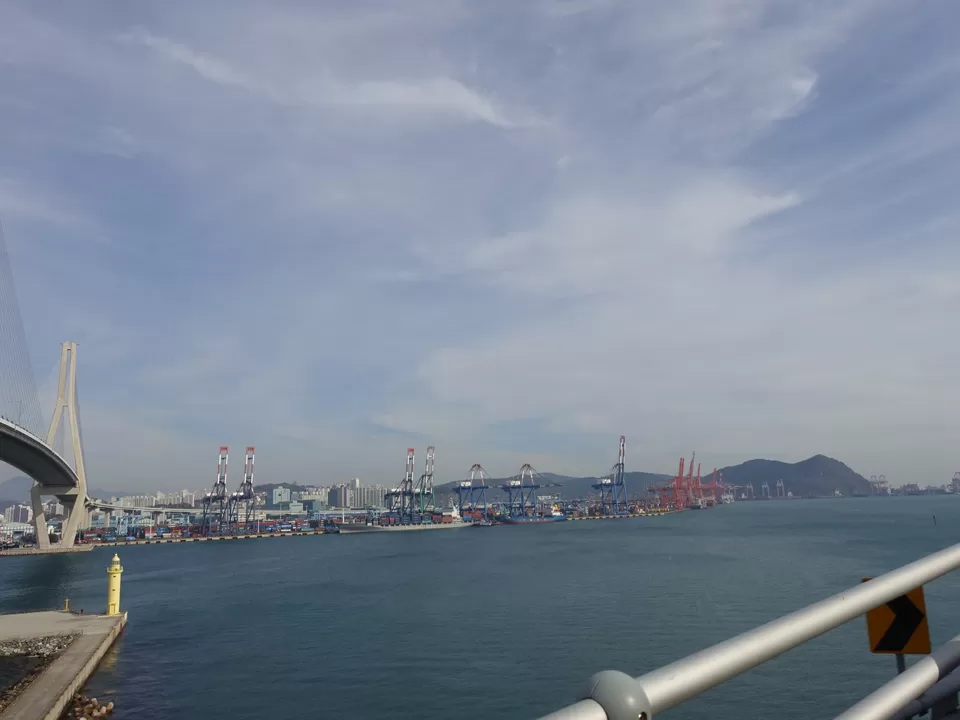
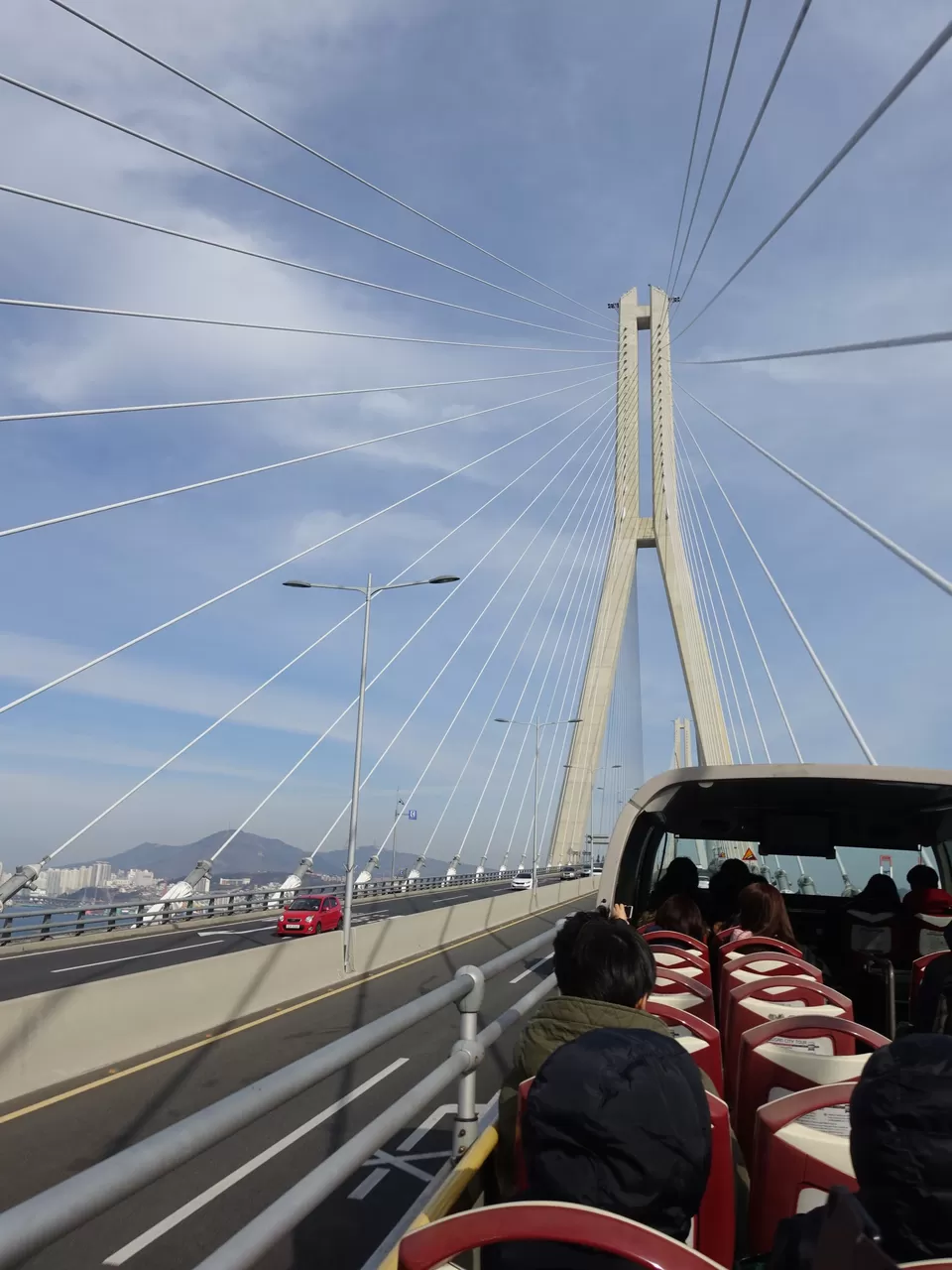
The Busan Aquarium is at Haeundae Beach, one of the stops in the tour. The aquarium is a great place to visit - it isn't just for families with small children! There was a wide variety of marine life, and so much to see (there were descriptions in English too!)
Visiting Haeundae Beach in winter was lovely. Sure, there weren't any water sports or suntanning activities going on, but the views were lovely! Come during sunset or at night.

We really wanted to visit the temple by the sea, Haedong Yongunsa, but there wasn't enough time! :( it closes at 4pm in winter.
We boarded the bus again, and went to the biggest shopping centre in the world, according to the Guiness Book of World Records - Shinsaegae. Shinsaegae is located in a huge complex called Centrum City, which is one of the stops on the tour. It was very very big, and very very shiny, unlike some of the buildings we had seen so far. There's a food hall at the basement and lots of shops to browse in. There's also a huuuuuuuuge spa and sauna.
Day 10: Seafood and Underground Shopping
The tour buses don't run on Mondays, so we had to get around on our own today. It was also raining, but that didn't stop us from wanting to visit Jagalchi Market. We read a lot about this market and couldn't wait to order and eat some fresh seafood. What you do is you order food on the first floor of the market and the store owners will bring it up to a restaurant on the second floor for it to be cooked. That was the plan, but we got a bit lost finding Jagalchi Market after we got out of the train station, and found another seafood market just by the sea. It was an open air market so we knew it wasn't Jagalchi Market (which is indoors). We saw huge slabs of all kinds of seafood laid out in front of a whole line of stores, manned by bad-ass ahjummas. These middle aged ladies made chopping an octopus that was half my body length look so easy. It was amazing walking along this stretch, avoiding the pools of squid ink on the floor, and gawking at the scaled, tentacled, and slippery produce.
We eventually found Jagalchi Market around the corner. Somehow the indoor market on the first floor didn't look as exciting as compared to what we had just seen. We walked up directly to the 2nd floor to eat. But, based on what other people have told me and what I've read, visiting the market on the first floor is fun too! So do pay it a visit.
It was still raining after lunch, so we didn't go to Gamcheon Culture Village as planned. We ended up heading to Lotte Mall, which was 14 storeys high! Not all of the floors were for shopping though.
Even after exploring the mall, the rain still hadn't stopped, so we decided to check out Seomyeon Underground Shopping Centre. There honestly wasn't much to see there, but we liked Daehyun Primall Busan better. Its another underground shopping centre linked to Seomyeon Underground Shopping Centre.
There's also the Seomyeon Food Street that I really wanted to check out, but the rain prevented us from doing too much walking outdoors. Such a pity!
Day 11: Beautiful Sea and Islands
Besides the Busan City Tour Bus (BUTI), there is another tour bus company called Busan Jumbo Bus Tour. BUTI doesn't go to Taejongdae Park, so we had to take this hop on and hop off tour bus instead. It is a big red bus with an elephant mascot on it. It costs 15,000 won too, and starts at the same time and at the same bus stop as BUTI. You can also buy tickets for this tour when you board. My husband and I felt that this tour was more concise. BUTI was more value for money as the tour goes to many more places than the Jumbo Bus Tour for the same price. But the Jumbo Bus Tour just focused on the more interesting places.
Huiyinyeol Culture Village is located just by the sea. It was so quaint and peaceful. We spent about half an hour walking around and admiring the views.



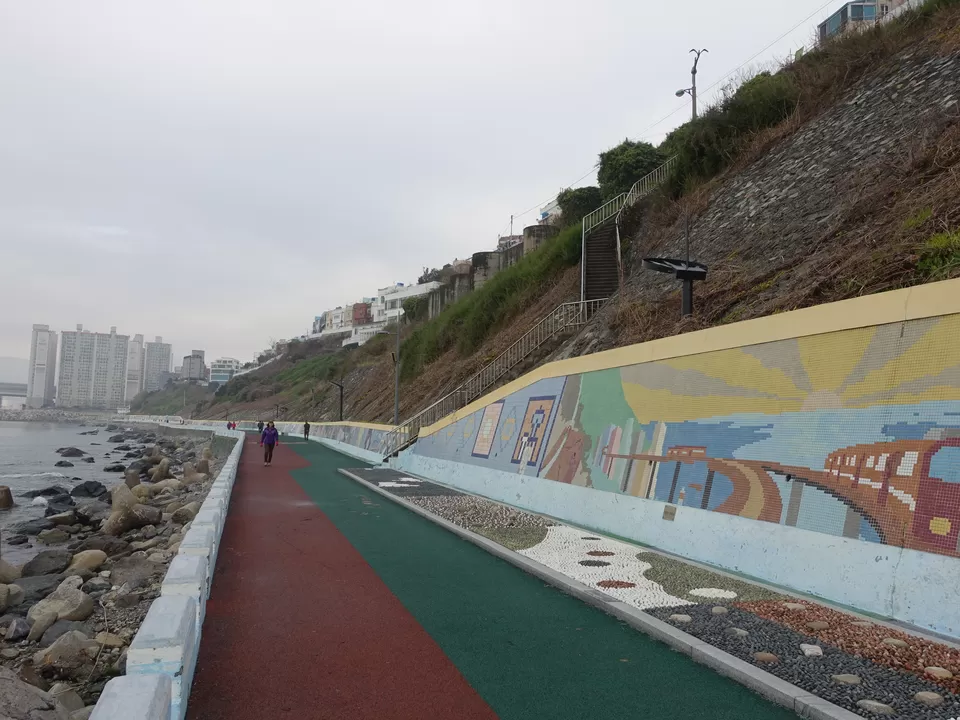
Next stop was something we were looking forward to - Taejongdae Park! It's a lovely nature park with hiking trails, and where you can view Tsushima Island in Japan. There were also little outdoor tents in the park that sold fresh grilled clams, scallops and other seafood in the park! I really wanted to try some of those seafood but my husband wasn't up for it. If you're there, I would recommend you try it! These tents are known as the Taejongdae Clam Tents and I heard some of the best seafood can be found here.
Taejongdae Park is pretty big - you can walk around but there's a tram called the Danubi Train that takes visitors around the park and makes stops along the way.



There's a lighthouse nearby but I was more excited by the view from the cliffs by the lighthouse. Check this out!




To get here though, you must climb down (and back UP! omg) many many flights of stairs. But the views are worth it. Do it!
We were starving after this exercise since we climbed up so many flights of stairs and walked around the entire park. There were some restaurants outside the park. We went into one that seemed relatively crowded and had some very very good fish stew.
Next stop was the Oryukdo Islands. We thought Taejongdae Park was gorgeous, but we were totally blown away here. The bus drives along the coast (gorgeous views again! <3) and stopped in front of a huge condominium (ocean views - must be a very expensive place to stay in!). This condominium looked different from the conglomerate branded apartments we saw earlier. It looked more expensive and was like a gated community.
The Oryukdo Islands are off this coast, and consists of a collection of 5 to 6 islets. During high tide you can only see 5 of them and during low tide there are 6. There is also a coastal hiking trail leading from this part of the coast to Gwangalli Beach, but it was a 7km hike, and it was almost sundown, so my husband and I decided against going on it. Such a pity though, it would have been nice to end the day off at Gwangalli Beach! If I lived here, I would hike every day.

There's a park next to the visitor centre and I highly recommend taking a stroll there! You can climb up a small hill and get a different view of the islands as well as of the sea.



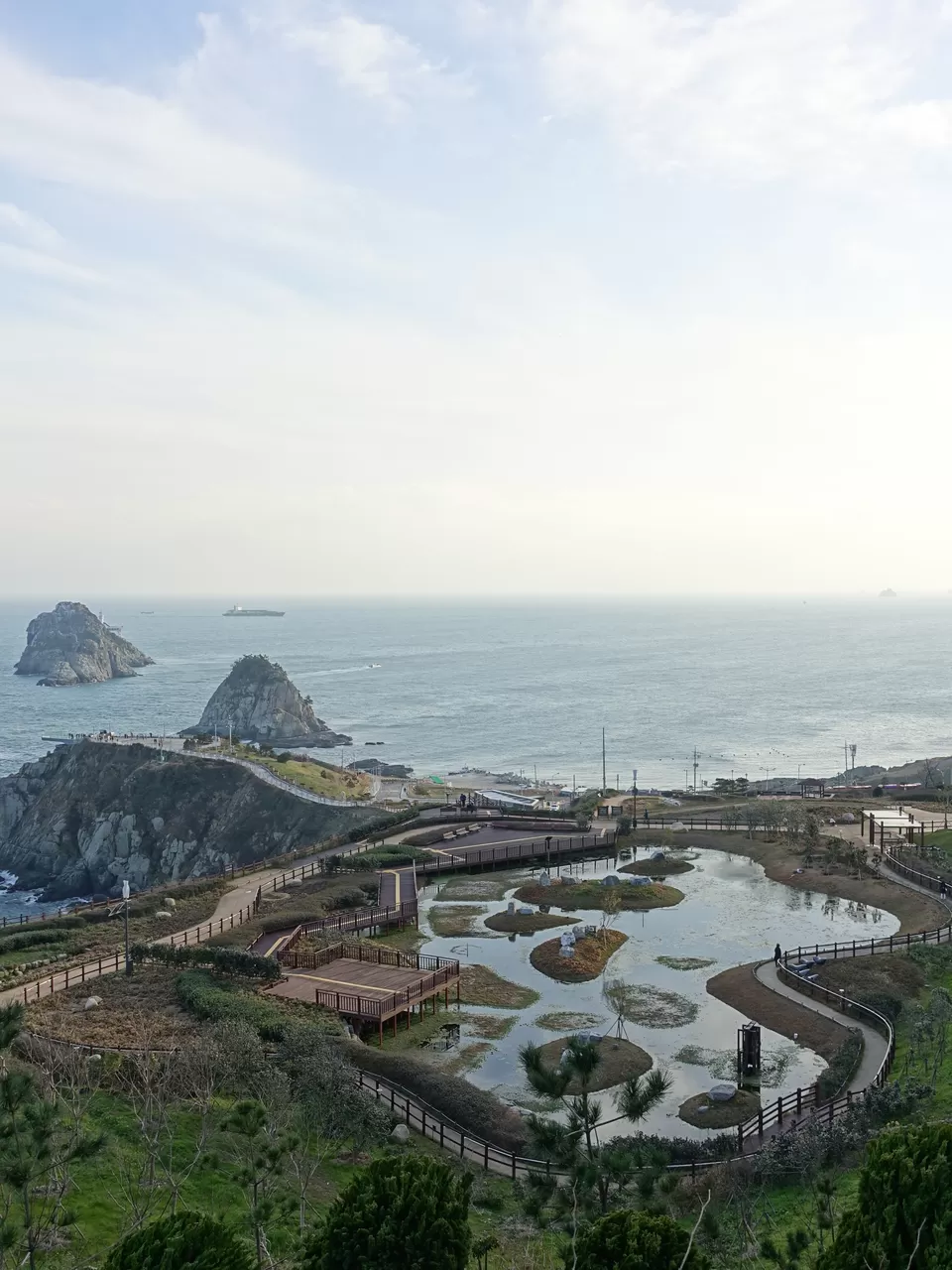

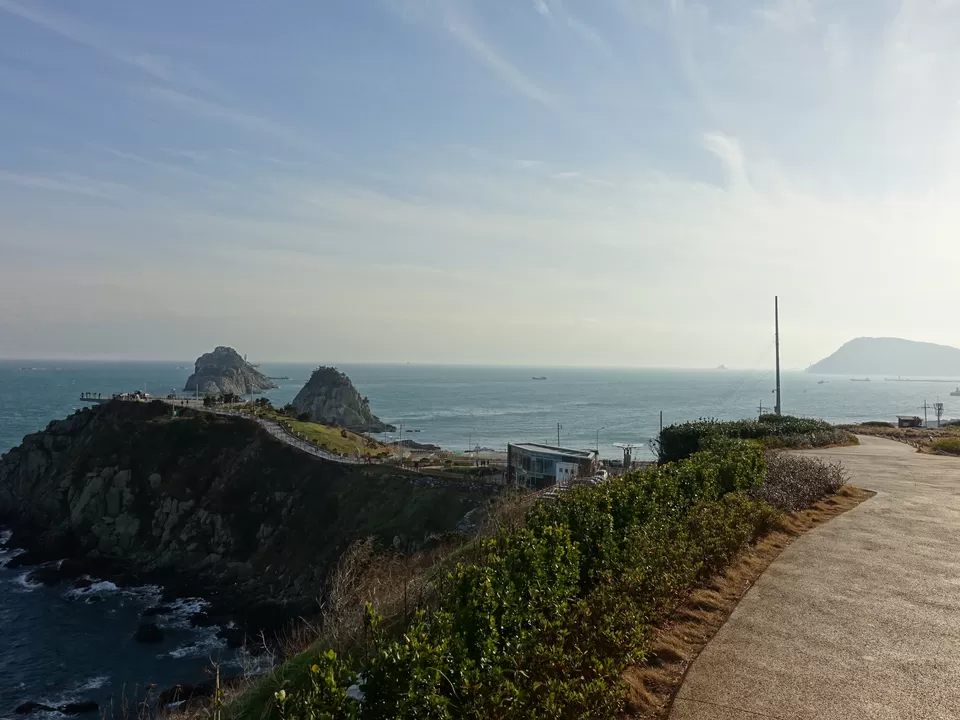
At night, we went shopping at Nampo-dong, which was great! Lots of little back alleys to explore, stuffed with shops and restaurants. The whole area including BIFF Square is great for shopping. There's also a food street here.
We highly recommend eating pork rice soup here in Busan. It's a Busan speciality and our favourite place is 5mins walk from Busan Station. It's called Beon Jeom Pork Rice Soup (I may have gotten the English spelling of the shop name wrong). There's a small sign in English on the shop window, and here are the directions: From Busan Main Station, head towards the taxi stand. Look for a building with a big "PC" sign on it. It is on the road Jungang daero 214 beon-gil. Head towards that building, and walk past the Angel-in-Us, walk straight along the road until you see the shop.
Address: Bonjeon Dwaejigukbap
3-8 Jungang-daero 214beon-gil, Choryang-dong, Dong-gu, Busan, South Korea
+82 51-441-2946
https://g.co/kgs/1PJBJ9
Day 12: Back to Seoul
We ended our trip by taking a KTX back to Seoul, and went crazy buying snacks, barley tea, and honey citron tea at Lotte Mart at Seoul Main Station. Here are the snacks we recommend:
1. Butter Waffles from the brand Crown
2. Choco Heim (Choco Hazelnut flavour) from the brand Crown
3. Premium Cheesecake
4. White Torte from the brand Crown
Our visit to Korea was fascinating and different, and that's what made it wonderful. I'd love to go back and do more hiking and eating!

